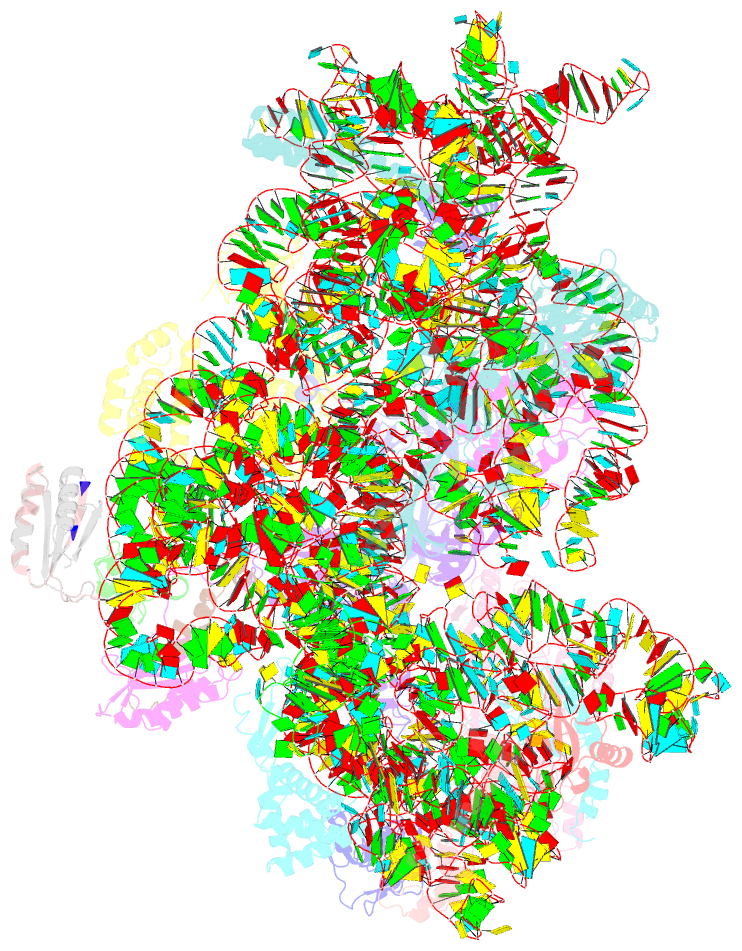Summary information and primary citation
- PDB-id
- 6o7k; SNAP-derived features in text and JSON formats;
DNAproDB
- Class
- ribosome
- Method
- cryo-EM (4.2 Å)
- Summary
- 30s initiation complex
- Reference
- Kaledhonkar S, Fu Z, Caban K, Li W, Chen B, Sun M, Gonzalez Jr RL, Frank J (2019): "Late steps in bacterial translation initiation visualized using time-resolved cryo-EM." Nature, 570, 400-404. doi: 10.1038/s41586-019-1249-5.
- Abstract
- The initiation of bacterial translation involves the tightly regulated joining of the 50S ribosomal subunit to an initiator transfer RNA (fMet-tRNAfMet)-containing 30S ribosomal initiation complex to form a 70S initiation complex, which subsequently matures into a 70S elongation-competent complex. Rapid and accurate formation of the 70S initiation complex is promoted by initiation factors, which must dissociate from the 30S initiation complex before the resulting 70S elongation-competent complex can begin the elongation of translation1. Although comparisons of the structures of the 30S2-5 and 70S4,6-8 initiation complexes have revealed that the ribosome, initiation factors and fMet-tRNAfMet can acquire different conformations in these complexes, the timing of conformational changes during formation of the 70S initiation complex, the structures of any intermediates formed during these rearrangements, and the contributions that these dynamics might make to the mechanism and regulation of initiation remain unknown. Moreover, the absence of a structure of the 70S elongation-competent complex formed via an initiation-factor-catalysed reaction has precluded an understanding of the rearrangements to the ribosome, initiation factors and fMet-tRNAfMet that occur during maturation of a 70S initiation complex into a 70S elongation-competent complex. Here, using time-resolved cryogenic electron microscopy9, we report the near-atomic-resolution view of how a time-ordered series of conformational changes drive and regulate subunit joining, initiation factor dissociation and fMet-tRNAfMet positioning during formation of the 70S elongation-competent complex. Our results demonstrate the power of time-resolved cryogenic electron microscopy to determine how a time-ordered series of conformational changes contribute to the mechanism and regulation of one of the most fundamental processes in biology.





